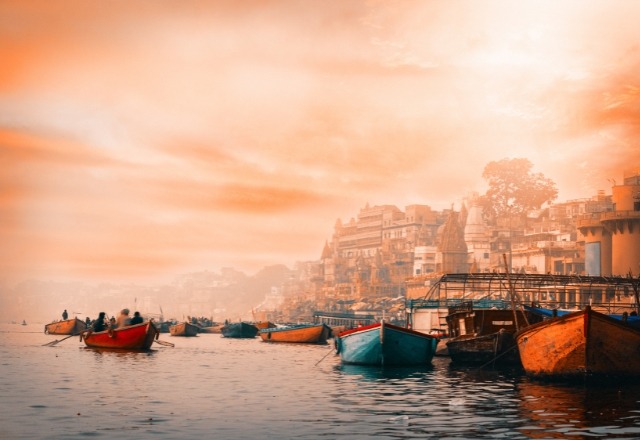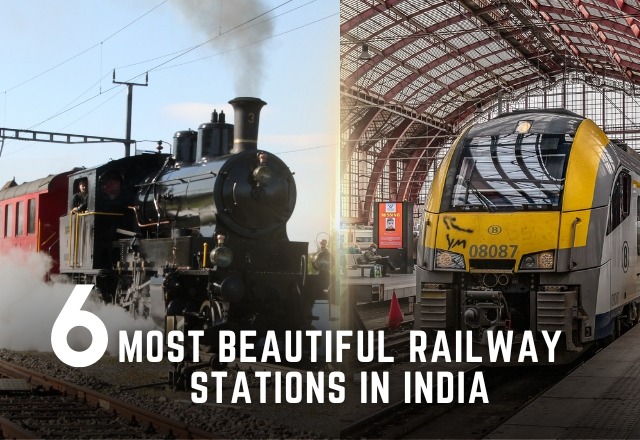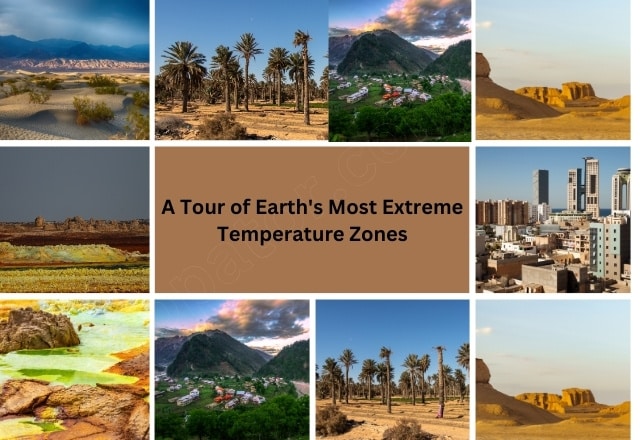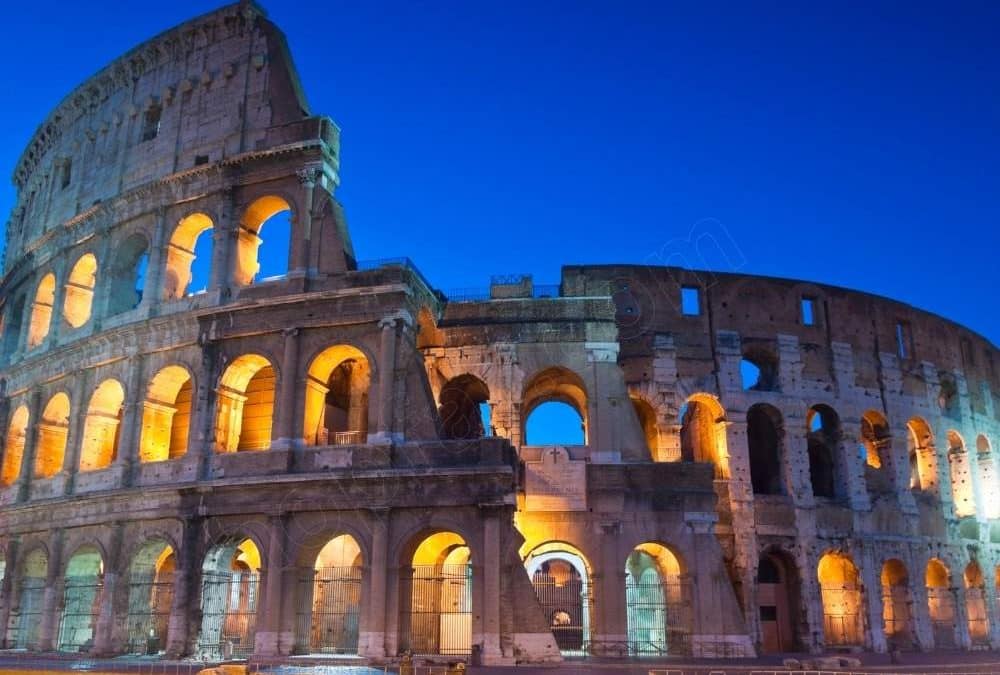
by pankaj | Nov 18, 2024 | Blog, Friends Trip, international, International Destinations, Latest Post, Travel Tips, vacations, Vacations & Leisure
India’s vastness is one of its greatest charms. From the snow-capped peaks of the Himalayas to the sun-kissed beaches of Goa, from the spiritual tranquility of Varanasi to the royal grandeur of Rajasthan, India is a land of contrasts. Here are some top destinations and experiences you should not miss:
1. The Spiritual Heart of India: Varanasi and Rishikesh
Varanasi: As one of the oldest living cities in the world, Varanasi is the spiritual and cultural heart of India. Located on the banks of the Ganges River, this city offers a deep connection to India’s religious heritage. Visitors come here to witness the mesmerizing Ganga Aarti, take a boat ride on the Ganges at dawn, and experience the palpable sense of devotion that fills the air. The temples, ghats, and narrow alleyways are a living testament to India’s ancient traditions and spiritual practices.
Rishikesh: Known as the “Yoga Capital of the World,” Rishikesh is a serene town nestled in the foothills of the Himalayas. It is a popular destination for spiritual seekers, yoga enthusiasts, and adventure lovers. You can join an ashram for a meditation retreat, try your hand at white-water rafting on the Ganges, or simply unwind in the peaceful surroundings of the mountains. Rishikesh is also a gateway to the Char Dham pilgrimage circuit, which includes some of the holiest shrines in Hinduism.
2. The Royal Glory of Rajasthan
Rajasthan, the land of kings, offers a fascinating blend of history, architecture, and vibrant culture. This northwestern state is dotted with grand palaces, fortresses, and colorful bazaars, all of which speak to its royal heritage.
Jaipur: Known as the “Pink City,” Jaipur is famous for its stunning palaces and forts, such as the Amber Fort, City Palace, and Hawa Mahal. The bustling markets filled with textiles, jewelry, and handicrafts make it a paradise for shopaholics. Don’t miss a visit to the Jantar Mantar, an astronomical observatory with fascinating instruments.
Udaipur: Often called the “Venice of the East,” Udaipur is renowned for its beautiful lakes and palaces. The City Palace, which overlooks Lake Pichola, offers breathtaking views, while the Jag Mandir Palace is a serene spot to watch the sunset. Udaipur’s charming streets and vibrant culture make it a romantic and peaceful retreat.
Jodhpur: Known for the majestic Mehrangarh Fort, Jodhpur is the gateway to the Thar Desert. The city’s blue-painted houses give it a unique, otherworldly vibe. The market near the clock tower, with its handicrafts, textiles, and spices, offers an authentic Rajasthani shopping experience.
3. The Beaches of India: Goa and Kerala
Goa: Goa is synonymous with pristine beaches, vibrant nightlife, and laid-back vibes. Whether you’re lounging on the beach, surfing the waves, or exploring the Portuguese-influenced churches and cathedrals, Goa’s unique mix of culture and natural beauty makes it a must-visit destination. Visit the beaches of Anjuna, Baga, and Palolem, each offering a different slice of paradise.
Kerala: Often referred to as “God’s Own Country,” Kerala is famous for its tranquil backwaters, lush green landscapes, and idyllic beaches. Take a houseboat ride through the backwaters of Alleppey, relax in the hill stations of Munnar, or enjoy the cultural performances of Kathakali and Theyyam in local temples. Kerala’s Ayurvedic spas are world-renowned, making it a perfect destination for wellness and relaxation.
4. Adventure in the Himalayas: Leh-Ladakh and Himachal Pradesh
Leh-Ladakh: If you’re an adventure seeker, Ladakh is a dream come true. With its stunning landscapes, snow-capped mountains, and rugged terrain, Leh-Ladakh is perfect for trekking, biking, and river rafting. The monasteries of Leh, like Hemis and Thiksey, offer a peaceful escape, while the magnetic hill and Pangong Lake are just some of the awe-inspiring natural wonders that make Ladakh so unique.
Himachal Pradesh: The Himalayan state of Himachal Pradesh offers some of the best trekking routes in India. Popular destinations include Manali, Shimla, and Spiti Valley. Whether you’re hiking to the top of Triund or skiing in Solang Valley, Himachal offers thrilling experiences for nature lovers and adrenaline junkies alike.
5. South India’s Temples and Culture
Madurai and Chennai: Madurai, home to the spectacular Meenakshi Amman Temple, is a cultural hub in Tamil Nadu. The intricately carved gopurams (temple towers) are a testament to the architectural brilliance of the region. Chennai, a coastal city, offers a mix of historical sites, such as the Fort St. George and Kapaleeshwarar Temple, along with serene beaches and thriving classical dance and music traditions.
Hampi: A UNESCO World Heritage Site, Hampi is a marvel of ancient Indian architecture. The ruins of the Vijayanagara Empire, including the Virupaksha Temple and Vittala Temple complex, transport visitors to a different era. The boulder-strewn landscapes, ancient step-wells, and rock carvings add to the allure of this incredible site.
6. The Northeast: A Hidden Gem
India’s northeast is an enchanting, less-explored region that offers natural beauty and rich cultural diversity.
Sikkim: Nestled in the Himalayas, Sikkim is home to lush valleys, pristine lakes, and magnificent monasteries. Tsongmo Lake and the Nathula Pass are popular spots for trekking and sightseeing, while Pelling offers panoramic views of Kanchenjunga, the third-highest mountain in the world. Sikkim’s Buddhist culture adds to its charm.
Meghalaya: Known as the “Abode of Clouds,” Meghalaya offers breathtaking natural beauty with its misty hills, living root bridges, and waterfalls. The town of Shillong has earned the nickname “Scotland of the East” for its scenic charm, while Cherrapunji is one of the wettest places on Earth.
Tips for Traveling in India
Plan Ahead: India is vast and diverse, so it’s essential to plan your trip according to the regions you want to visit and the time of year. The weather can vary greatly, so packing accordingly is key.
Cultural Sensitivity: India is culturally diverse, and customs can vary from region to region. Respect local traditions, especially in places of worship.
Local Cuisine: India’s food is as varied as its people. Don’t miss out on regional specialties like Biryani in Hyderabad, Rajasthani Thali in Jaipur, and Dosas in Chennai. Just be mindful of the spice levels!
Transportation: India’s transportation options are varied, including trains, buses, taxis, auto-rickshaws, and even camel carts in some areas. It’s wise to book your train tickets in advance for long journeys, and be prepared for the sometimes chaotic nature of traffic.
Safety: While India is generally safe for travelers, always stay vigilant, especially in crowded areas. Be cautious of scams and take precautions when it comes to food and water.

by pankaj | Nov 6, 2024 | Blog, India, Latest Post, Travel Tips, Vacations & Leisure
1). Travelling by train offers a unique experience that surpasses the experience of traveling by planes or cars. The joy of sitting by the window and watching the lush greenery, exciting fields, and waterfalls is truly special. Today, let’s explore India’s most stunning railway stations and scenic routes, which showcase the country’s diverse and beautiful landscapes.
2). Known for its natural beauty, Karnataka is home to some amazing tourist destinations. Among them, Karwar Railway Station is one of the most beautiful railway stations in India. Located in Karwar town, this station is part of the main route connecting Bangalore and Mumbai. Established in 1857 by the British, Karwar is called the “Kashmir of Karnataka” due to its scenic charm. It serves as a major junction connecting major cities like Delhi, Jaipur, Indore, Ernakulam, and Coimbatore. The station and its surroundings are especially beautiful during the monsoon season, offering a captivating experience to travelers.
3). Known for its stunning beaches and vibrant atmosphere, Goa is undoubtedly one of the most beautiful places in India. Adding to Goa’s tourism is the beautiful Dudhsagar Railway Station, which is one of the most scenic stations in the country. Located on the Goa-Karnataka border, Dudhsagar Station offers breathtaking views of the Western Ghats. Bollywood superstar Shah Rukh Khan’s Chennai Express was shot near the magnificent Dudhsagar Falls. The number of visitors attracted to this wonderful place is increasing day by day.
4). Nestled amidst beautiful hills, Kathgodam Railway Station in Uttarakhand captivates travellers with its natural beauty. Connecting Dehradun and Kathgodam, this station is recognized as one of the greenest stations in India, making it a must-visit for nature enthusiasts. Kathgodam Station boasts eco-friendly features such as solar power, rainwater harvesting, and solid waste management facilities. Popular trains like the New Delhi-Kathgodam Shatabdi Express, Lucknow Junction-Kathgodam Express, Ranikhet Express, and Uttarakhand Sampark Kranti Express pass through this scenic station.
5). Located in Himachal Pradesh, Shimla, known for its breathtaking natural beauty, is a prominent spot among India’s hill stations. Surrounded by beautiful hills and lush green forests, the view of this station is very beautiful. Indian Railways has implemented several green initiatives here, including tree planting, solar panel installation, recycling, and waste management to protect the surrounding environment. The station has a rainwater harvesting system that helps in recharging groundwater. As a result, Shimla Railway Station is one of the most beautiful railway stations in India.
6). Located in the Dima Hasao district of Assam, Haflong Railway Station is celebrated as a “Green Railway Station” by Indian Railways. This station connects Haflong to Guwahati and Silchar and is nestled amidst the lush green hills of Assam, offering a beautiful view. Haflong Station has earned recognition for its use of renewable energy, enhanced energy efficiency, and efficient solid waste management practices. Its commitment to sustainability adds to its charm and makes it a great destination for eco-conscious travellers.

by pankaj | Sep 19, 2024 | Blog, India, Latest Post, Tips, Travel Tips
Traveling the world offers unparalleled opportunities to experience diverse cultures, stunning landscapes, and unique adventures. Here’s a list of the top 10 travel destinations that provide extraordinary experiences for every type of
traveler.Impact-Site-Verification: -1127652964
1. Paris, France
Why Go: Often referred to as the “City of Light,” Paris is a dream destination for art, culture, and romance lovers. Home to iconic landmarks like the Eiffel Tower, the Louvre, and Notre-Dame Cathedral, the city offers world-class museums, charming streets, and delightful patisseries.
Highlights: Eiffel Tower, Louvre Museum, Champs-Élysées, Montmartre.
2. Kyoto, Japan
Why Go: Kyoto is the cultural heart of Japan, known for its ancient temples, traditional tea houses, and stunning gardens. It’s a perfect blend of modernity and ancient traditions, with beautiful cherry blossoms in the spring and captivating autumn foliage.
Highlights: Fushimi Inari Shrine, Kinkaku-ji (Golden Pavilion), Arashiyama Bamboo Grove, tea ceremonies.
3. Santorini, Greece
Why Go: Famous for its white-washed buildings with blue domes and stunning sunsets, Santorini is one of the most picturesque islands in the world. Known for its beaches, crystal-clear waters, and unique volcanic landscapes, it’s a perfect spot for a romantic getaway.
Highlights: Oia village, Red Beach, Akrotiri archaeological site, wine tasting.
4. Bali, Indonesia
Why Go: Bali’s tropical paradise is perfect for those seeking beaches, vibrant culture, and natural beauty. From its terraced rice fields to its sacred temples, Bali offers everything from surf-friendly shores to tranquil retreats.
Highlights: Uluwatu Temple, Tegallalang Rice Terraces, Ubud Monkey Forest, beach resorts.
5. New York City, USA
Why Go: New York City is the ultimate urban experience. From world-class museums and theater to its famous skyline and diverse neighborhoods, NYC offers endless activities and a fast-paced energy that is hard to match.
Highlights: Statue of Liberty, Central Park, Times Square, Broadway shows, Empire State Building.
6. Cape Town, South Africa
Why Go: With breathtaking landscapes, Cape Town is a traveler’s delight. Situated between the ocean and mountains, it offers stunning beaches, wildlife reserves, and historical sites. The surrounding wine country and the majestic Table Mountain make this city a standout destination.
Highlights: Table Mountain, Robben Island, V&A Waterfront, Cape of Good Hope, wine tours.
7. Rome, Italy
Why Go: Steeped in history, Rome is a must-visit for history buffs and culture seekers. Explore ancient ruins, Renaissance art, and some of the best food in the world while immersing yourself in the charm of the Eternal City.
Highlights: Colosseum, Vatican City, Pantheon, Trevi Fountain, Roman Forum.
8. Queenstown, New Zealand
Why Go: Queenstown is the adventure capital of the world. Nestled in the Southern Alps, it offers activities like bungee jumping, skydiving, and skiing. The scenic beauty of the surrounding lakes and mountains also makes it a perfect destination for nature lovers.
Highlights: Lake Wakatipu, Remarkables mountain range, adventure sports, Milford Sound.
9. Iceland
Why Go: Iceland is a natural wonderland with geysers, volcanoes, glaciers, and waterfalls. Whether you’re seeking to see the Northern Lights or explore black sand beaches, Iceland’s surreal landscapes provide an otherworldly experience.
Highlights: Blue Lagoon, Golden Circle, Northern Lights, Reynisfjara Beach, Vatnajökull National Park.
10. Maldives
Why Go: Known for its overwater bungalows and crystal-clear lagoons, the Maldives is the epitome of luxury and relaxation. With stunning coral reefs and marine life, it’s a perfect destination for snorkeling, diving, and soaking in paradise-like surroundings.
Highlights: Private island resorts, snorkeling, diving, romantic dinners on the beach, manta rays, and sea turtles.
Conclusion:
These top travel destinations offer something for every kind of traveler, whether you’re seeking relaxation, adventure, history, or culture. Each location on this list promises unforgettable experiences and breathtaking scenery that will leave you yearning for more exploration!

by pankaj | Jun 12, 2024 | Blog, City/State Tour, Latest Post, Travel Tips
There are numerous climate zones in our world, and for those of you who like it hot, there is nothing like bright sun and warm nights. If you’re a heat seeker on a quest for the perfect summer getaway, stop right here! Here’s a sizzling list of the 10 hottest places on Earth, along with what makes them burn and the fiery experiences they offer
- Death Valley, California, USA: The holder of the title ‘world’s hottest’ has the record of the highest temperature in the world that is 56.7°C (134°F) in 1913. This desert valley is a hot and dry location that features arid plains, large sand mounds, and saline plains, which makes it suitable for people who can endure heat. For hikers of Death Valley, the journey is in hiking through this harsh terrain to see the beautiful sights such as the lowest altitude point in North America known as Badwater Basin or the sculpted rocks of Zabriskie Point.
- Kebili, Tunisia: The town of Kebili rises from the middle of the Sahara desert, and the climate is characterized by extremely high temperatures in summer exceeding 55 degrees Celsius (131 Fahrenheit). This old town gives a feel of the desert region through the palm trees, traditional circulation structures, and the opportunity to have the feel of the desert through the safari. Apart from the 4×4 desert safari to the dunes, Kebili offers travelers a cultural experience where one can get to see and learn about the local dress code, the κεffieh, and get to taste local food such as bricka, a pastry stuffed with meat or seafood.
- Turbat, Pakistan: This city is located in Balochistan province, and this area is well known for high temperatures, with temperatures often exceeding 53°C (128.7°F). Turbat has a rich cultural element, and it is quite interesting to see how people developed to survive in such a climatic environment. The visitors can do this firsthand by visiting a colorful Thursday Bazaar or driving along the Makran Coastal Highway with gorgeous views of the Arabian Sea.
- Lut Desert, Iran: This huge lowland area includes Dasht-e Lut, called by some satellite temperature measurements the hottest place on the planet. Though the official ground temperatures have not been as high as those recorded in Death Valley, Lut Desert can boast of its hot reputation. It boasts spectacular calderas and extraordinary rock patterns known as yardangs, which have been carved by blistering winds. Visiting the Lut Desert is strictly prohibited without a permit and escort because of the harsh climate. For those who dare enter, they will be met with some of the largest star-shaped sand formations called Keluts and the desolate beauty of this wasteland.
- Dallol, Ethiopia: This volcanic region situated in the Danakil Depression is not just hot but is uniquely extraordinary. A location with colorful acidic hot springs, geysers, and fuming fumaroles that are significantly over 40°C (104°F). Dallol is a geologist’s paradise and an extraordinary thermal wonderland. Even getting to Dallol is a sort of a story since it can be accessed only through crossing incredibly hot desert. However, the view of this otherworldly environment, which is painted in the shades of yellow, green, and orange, is worth it.
- El Azizia, Libya: This small town also set the record of the highest temperature ever recorded in Africa in 1922 with a record high of 58°C (136°F). El Azizia shows traditional Libyan architecture with adobe houses as well as a different pace of life comparing to the cities. For the adventurous, the large area of the Wadi Faregh system of dry valleys with beautiful rocks are diversions from the hot town core.
- Dallol, Ethiopia: The area is not only hot in terms of climate and geology but also has a rich history. Originally, it was a potash mining outpost, and the harsh climate demanded that the town be abandoned. Old mining equipment and crumbling structures that litter the landscape capture people’s fight against the forces of nature.
- Titul, Pakistan: Titul is a town situated in the Sindh province of Pakistan where summers are extremely hot, with temperatures as high as 50°C (122 °F). It is an agricultural town which provides an opportunity to observe the remnants of the prehistoric Indus Valley civilization and numerous archaeological sites. Some of the sites of interest include the Makli Necropolis that has been accredited as a World Heritage Site through UNESCO and the mord-era decorated tombs of the Sindh rulers.
- Kebili, Tunisia : Apart from the extreme temperature, Kebili and its surroundings offer an opportunity to visit the Chott el Djerid – the Great Salt Lake of Tunisia, where a multitude of photographers and nature lovers can take astonishing sunrise and sunset shots.
- Lut Desert, Iran : The Lut Desert extends beyond hot temperatures; it is also the perfect location for anyone who loves stargazing. The sky in Lut Desert is as clear as could be owing to the lack of artificial lights and dry weather and is filled with billions of stars along with the Milky Way galaxy.
Thus, for those who love the heat and the spirit of the search for hot places, this selection will provide a perfect start. Thus, it is important to know that preparation and protection are always necessary while attempting to traverse these areas. However, for the traveler who is willing to take the heat and visit the hot destinations of our world, the experience is unique.

by pankaj | May 10, 2024 | Blog, Garden, Latest Post, Travel Tips
Japan is a theme park paradise, featuring thrilling rollercoasters, cute character encounters, and mind-blowing stories you’ll never find anywhere else. On top of the usual attractions of Universal Studios Japan and Tokyo Disneyland, there is another strange yet fun world of funny parks to be discovered. Here are 10 amazing theme parks in Japan you’ve got to visit
- Ghibli Park
Discover the magical world of Studio Ghibli in this new park. Experience sections based on the well-known movies, such as My Neighbor Totoro and Spirited Away, with imaginative attractions, displays meant to interact, and a chance to meet your favorite characters. Get immersed in nature as you wander through Dondoko Forest, hop on the Catbus for sight-seeing, and let the tales of Ghibli catch you wistfully.
- Sanrio Puroland
Hello Kitty fans, put a smile on your face! This indoor park is a Sanrio paradise, a colorful park where you can find rides, shows, and meet-and-greets with Hello Kitty, My Melody, and all your favorite friends. The Lady Kitty House teacup ride at the park can be enjoyed by spinning around and singing at the Friendship Land show at the same time, and kawaii overload at Puroland is a must.
- Nago Pineapple Park
Okinawa isn’t only about beaches. Indulge in a walk to this unusual pineapple-themed park. Find out how the fruit is grown by being in fun and educational exhibits, ride the pineapple-shaped cart around the fields, and of course, enjoy all the things pineapple just as a pineapple soft serve or a pineapple hat on here.
- Moominvalley Park
Moomin children young and adults will love this surreal park created on the base of the characters from the Finnish Fairytales. Discover Moomintroll’s home, a lovely blue cabin surrounded by the trees, and encounter the amenable inhabitants such as the imaginative Snufkin and the wise Moominmamma. Wander through the picturesque surroundings that were actually taken from the books. Make a magical boat trip on Riverbank Cart or unleash your creativity in the playgrounds built especially for the kids.
- Huis Ten Bosch
Little Netherlands in a Japan land, Huis Ten Bosch is a place to enjoy canals, windmills, and European-style architecture. Take a gondola ride over the flower-crowned canals, which look like Amsterdam, discover the shimmering display of lights coming to life at night, and get a sense of “the Dutch” with some traditional stroopwafels (syrup waffles).
- Aqua Park Shinagawa
Skip the heat and the crowds at this unusual indoor water park in Tokyo. Feel the adrenaline rush as you plunge down water slides such as the “Black Hole” and “Caribbean Cyclone” while enjoying your relaxing moments in the wave pools and melting away into the tropics with faux palm trees and simulated sun rays right in the middle of the city.
- Edo Wonderland
Journey into the past to land of the Edo period (1603-1868) at this historical theme park. Dress up as a samurai, enjoy seeing kabuki theater and ninja performances as well as being a part of the numerous sights and sounds of old Japan. Savor street food belonging to that era, compete with others in samurai swordsmanship classes, and engage with the fascinating history.
- Yokohama Cosmo World
Brighten up those adrenal glands at this lakeside park with hair-raising rollercoasters like the thrilling “Do-Dodonpa” that will take you from 0 to 180 km/h in 1.56 seconds. Admit to the giant Ferris wheel called “Cosmo Clock 21” for a full view of Yokohama and its surrounding bay and pep up your excitement by taking part in numerous carnival games.
- Nijigen No Mori
Anime and manga fans are definitely going to be thrilled by this park which is devoted to their favorite heroes. Ride a zipline into the mouth of Godzilla for an incredible stunt that you will never forget and soar through the sky using a grappling gear inspired by the Attack on Titan as an exciting attraction. Also, experience interactive exhibits based on many different series like Naruto and ワンピース (One Piece).
- Warner Bros. Studio Tour Tokyo – The Making of Harry Potter
Walk into the enchanting Harry Potter universe at this amazing studio experience. Discover the legendary spots, like the Great Hall with the floating candles and the Gryffindor common room, and peek into the secrets behind the scenes, as you see the costumes, props, and other special effects up close and personal. Make sure you try out a Butterbeer at the recreated Backlot café and pick up cool memorabilia at the themed shops.
This displays only a small fraction of the distinctive themed parks that Japan has. Whether it is meeting cartoon characters or exploring historical periods or diving into the world of anime, there is one such place for every adrenaline freak, pop culture fan, and history lover. Well, pack your bags, gear up with an adventurous spirit, and get ready to plunge into a universe full of theme parks.

by pankaj | May 10, 2024 | Blog, City/State Tour, India, Latest Post, Tips, Travel Tips
Over thousands of years, humanity has been intrigued with the idea of the “Seven Wonders of the World”. These astounding masterpieces stand for peak human achievement and the astonishing beauty of nature. Let us explore history and discover the top seven wonders of the past and today, trying to reveal the nature of these mysteries.
- The Great Wall of China
A masterpiece of architecture, 13,000 miles long and running along the rugged Chinese terrain, the Great Wall has become the only surviving of the antiquity’s seven wonders. The roots of this style can be traced to the 7th century BC and it has progressed through numerous dynasties and eras. Mostly, constructed as a defense against invasions, particularly from the nomadic tribes coming from the north, the Wall shows the overall strength, wisdom and engineering ingenuity of the ancient Chinese. The wall is built using different materials, such as brick, stone, tamped earth, and wood. It uses strategically located watchtowers, battlements, and beacon towers along the whole fortification span. Walking along its ramparts, one can join the families of the soldiers throughout the generations tracing the steps that finally lead to understanding the pinnacle of China’s history as a sign of its strength.
- The Colosseum, Rome
The colossal Colosseum, an iconic symbol of the power and the culture of the Roman Empire, is a marvel of engineering and entertainment. This monument, constructed in the 1st Century AD by the Flavian Dynasty, was largely used for gladiator fights, animal hunts and public executions, as a form of amusement and political promotion. The Colosseum which could accommodate up to 80,000 people was an incredible architectural feat of its time with lots of complicated features like the hypogeum, elevators, and trapdoors to make the grand performances a success. Nowadays, its well-worn facade provides a glimpse into the bloodthirsty and magnetic reality of ancient Roman banquets, while the restoration works to preserve the place for future generations.
- Petra, Jordan
Carved from skillful artisanship and urban planning, Petra, the Rose-Red city, represents a unique masterpiece in Jordan. Established around 300 BC by the Nabataeans, it grew to be a very lively trade center, lying on the caravan routes connecting Arabia, Egypt, and the Mediterranean Sea. The city’s most well-known colorful building, Al-Khazneh, was used as a tomb and ceremonial temple. Its architecture and artistry demonstrate the Nabataeans’ high level of expertise. The Siq or a narrow corridor leading to the city reveals the Treasury to all visitors with its extraordinary architectural techniques, remarkable carving and the smart water distribution system that supports the city in the hot and dry setting.
- Chichen Itza, Mexico
Sprawled across the fertile Yucatan Peninsula of Mexico, Chichen Itza was a thriving Mayan city between the 6th and 13th centuries AD. Its major highlight, El Castillo, is the Temple of Kukulcan which is a magnificent step pyramid with astronomical significance and perfect symmetry. During the spring and autumn equinoxes, the setting sun creates the southward shadow of a serpent descending from the sky representing the Mayans’ superior knowledge of the celestial appearances. The Ball Court, having its distinctive acoustics and incredible sculptures of ritualistic games and sacred ceremonies, allows a view of the Mayan civilization’s rich cultural heritage and religious customs.
- Machu Picchu, Peru
Hidden behind the Andean mist, Machu Picchu is the symbol of not only the Incas’ architectural skills but also of their deep reverence for nature. Constructed on a mountain ridge in the 15th century AD overlooking the Urubamba River valley, the intricate stone masonry together with its mysterious setting generates a feeling of admiration and awe. Although Machu Picchu served as a royal palace and religious center, agricultural terraces, temples, and residential areas express the expertise of the Inca in engineering, agriculture, and urban planning. The Machu Picchu was discovered in 1911 by Hiram Bingham, and until now it keeps amazing archaeologists and historians, as well as inviting visitors to see the lost world of the Incas and their complex civilization.
- Christ the Redeemer, Brazil
The Christ the Redeemer stands atop Corcovado mountain in Rio de Janeiro with its arms spread out as a symbol of peace and hope. Its Art Deco architecture from 1931 flawlessly fits in with the surrounding area, offering spectacular views of the dynamic city as well as the ocean of Guanabara Bay. The statue having a height of 98 feet coming with a 26-foot pedestal is a symbol of Brazil and Christianity that has been attracting millions of visitors every year. A pilgrimage to this famous statue is a truly unforgettable experience, especially if you are a seeker of peace, inspiration and a stunning view of Rio’s picturesque skyline and lush nature.
- Taj Mahal, India
The Taj Mahal of Agra, India, is more than a mere monument as it is love embodied in white marble. The Taj Mahal was commissioned by the Mughal emperor Shah Jahan in memory of his wife, Mumtaz Mahal, and it displays the best of the Mughal-era Islamic architecture, with its elegance, symmetry, and lavish ornamentation. This construction took 20 years and included artisans from the entire empire and beyond, the Taj Mahal has a symmetrical plan, decorative marble inlay work, and a clean reflecting pool, which creates an enticing enchantment of light and shadow. Decorated with semi-precious stones and Quranic calligraphy, it is an immortal monument of love that continues to fascinate millions of people from all over the world.
The seven wonders, located in different parts of the globe, are the symbols of human imagination, firmness, and the never-ending search for wisdom and beauty. Each wonder gives us a peek into history, making us feel amazed and inspired, and helping us understand how much humans have accomplished over time.









